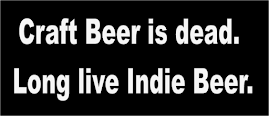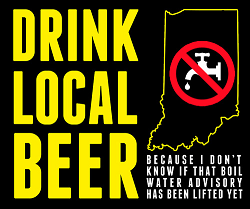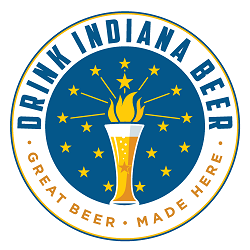A weekly web column by Roger A. Baylor.
It is impossible to overstate the importance of “dark” beer during my formative years. After all, who are you going to believe, Gussie Busch or your own eyes? Wasn’t beer supposed to be yellow, and if it wasn’t yellow, what exactly did that mean?
Very, very interesting.
My first close encounter with Guinness was not of the draft kind, which didn’t reach Louisville until later in the 1980s. Rather, it was Extra Stout from the bottle. Fireworks went off, and bells could be heard chiming deep in my throat.
But dark beers were not entirely new to me, although I hadn’t the first idea why they were dark, or how they were made, or how they differed from the massive blackness of Guinness, which cut an olfactory swath through my soul.
Early on, in 1978 or thereabouts, there had been a dark beer from a long-defunct Chicago brewery called Peter Hand (it also made an extra light beer of some sort), and it was followed onto Cut Rate Liquors’s shelves by Augsburger Dark. Occasionally we purchased the contract-brewed American version of Lowenbrau Dark, having accepted without question Miller Brewing’s television advertising strategy of "tonight, let it be Lowenbrau," and saving it for special times.
There had been other American Dark Lager sightings. Don Da Leon’s, a deli and imported foods store located in the shabby old Quadrangle in Jeffersonville, was far ahead of its time, and put Schlitz Dark on draft around 1981. Even before that, Mario’s Pizza on Charlestown Road in New Albany (Mandarin Café is located there now) had a dark beer on tap for a few months. It came from the Budweiser wholesaler, and must have been a short-lived Bud house brand experiment.
Just after having Guinness for the first time, I saw a six-pack of Stroh’s Bock and tried it. What was bock, anyway? According to an old man at Steinert’s, who spoke in stately and authoritative confidence, and probably hadn’t traveled any further afield than Cincinnati in his entire life, bock was brewed from the leftovers at the bottom of the vats after spring brewery cleaning each year.
As for himself, he wouldn’t touch the dark stuff for fear of its crippling 20% alcohol content and molasses-like consistency. It wasn’t long until I learned that those tales of spring scrubbing and heightened potency were utter nonsense. At first I suffered from embarrassment for having been so stupid, but later realized that listening to old men perched on bar stools telling stories was the important part, and truthfulness a subsidiary consideration.
---
At first, Guinness Extra Stout was a multicultural shock, and the impact was softened by mixing it with flavorless golden lager beers. To be perfectly honest, on more than one occasion we brought a six-pack into the K & H Cafe in Lanesville and amused the owners by making “black and tans” using draft Budweiser. I must have been living right, because the beer gods saw fit not to punish me for this transgression, and anyway, the percentage of the “cut” became more and more lopsided until we graduated permanently to unalloyed stout.
Whether “black and tan” or “half and half,” I’ve had little use for the idea of training wheels since discarding them. As my friend Mark once noted, the perfect “black and tan” isn’t halves of stout and pale ale or golden lager mixed in a glass. It’s a pint of each, mixed in your stomach.
---
Of course, merely being introduced to better beers like Guinness and Pilsner Urquell did not imply automatically enshrinement into a state of pure bliss and enlightenment. Many years of practice and refinement were yet to come, in part because youth is wasted on the young. When there is a surfeit of hormonal adrenalin and a paucity of discretionary cash, progress in any area can be painstaking and incremental. Old familiar temptations and new, unexplored domains vied for hegemony over mind, palate and wallet.
Gradually it became clear that if beer’s sole purpose was to serve as an odorless, flavorless alcohol delivery device, then it held little ultimate interest for me. A bottle of cheap vodka and a few drops of Rose’s Lime Juice provided a much speedier and efficient means of intoxication.
It was left to Michael Jackson’s original “World Guide to Beer,” as culled from the remainder table at a mall bookshop, to become the cosmic text that wove all the threads into a coherent whole.
Jackson offered the saga of beer as a long and fascinating one, ranging across all aspects of the human experience.
Beer is about science and art, farms and cities, social history, local culture and geography. It's about the places you've gone, and the ones you'd like to go. It's about different textures and flavors to match your mood, the time of day, the season, and the task at hand.
To this very day, my relationship with better beer continues to be defined by what the academicians would call a cross-disciplinary approach. In its absence, my interest flags, because when better beer is removed from its context as a unifier of human experience, to be isolated and objectified as a status-affirming Soma for beer porn narcissists, it’s just another fad.
I might as well be a wine geek – and that’s a fate worse than death.
---
By 1983, I was working part-time at the old Scoreboard Liquors in New Albany and seeking to stock one door of the walk-in cooler with imports (remember, American-made “craft” beers were as yet several years away). On and off, I continued at this job right up until 1992, when I went into the business at the pub formerly known as Rich O’s.
Starting in 1984 or thereabouts, I no longer drank light, low-calorie beer under any circumstance. In 1985, I traveled to Europe for the first time, a voyage of exuberant discovery that has been repeated dozens of times since. In those early days, after each trip, it became harder and harder to return to old haunts and to stomach cans of Stroh’s or High Life, although until 1992, it continued to happen.
Now it is the year 2014. My last taste of Budweiser came in 2004, and before that, 1992.
Bud Light? Early 1980s.
I managed to swallow a Miller High Life in 2009, and perhaps consumed a new generation (read: impossibly vapid) Pabst at some point during the last five years. So it is that exceptions prove the rule, and the mass-produced liquid still preferred by my countrymen (and women) at a ratio of 9 to 1 is utterly alien to me. I can more easily imagine being beamed up to the Enterprise for afternoon tea than drinking a Coors Light.
And this is the source of enduring, abiding happiness for me.







No comments:
Post a Comment